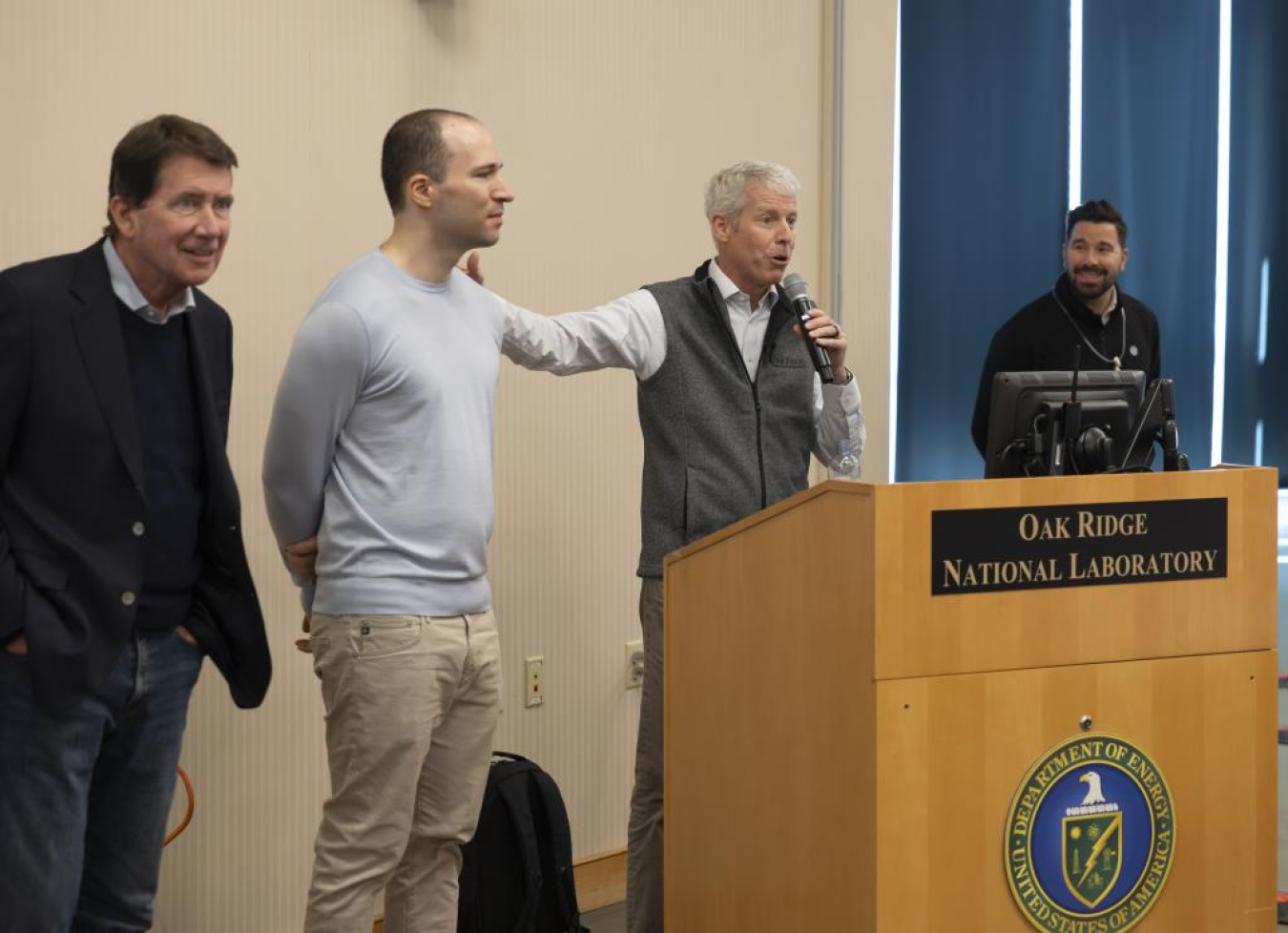The Office of Science is supporting fundamental science research.
April 30, 2025Over the past 100 days, the Department of Energy’s Office of Science has seen the pay off in results from decades of research investments and supported new efforts to move forward with cutting-edge technologies.
- Advancing artificial intelligence (AI): Nine of the DOE’s national laboratories co-hosted the first 1,000 Scientist AI Jam with OpenAI. More than 1,500 participants explored the many ways AI could support their research. Energy Secretary Wright, who attended the event at DOE’s Oak Ridge National Laboratory, noted “We’re at the start of a new Manhattan Project.”
- Reducing requirements on national laboratories and grant recipients: Energy Secretary Wright issued new actions to reduce permitting rules and regulations for construction projects at DOE’s 17 national laboratories. These changes will accelerate infrastructure projects at the labs. In addition, the Office of Science removed Promoting Inclusive, Equitable Research (PIER) Plan requirements from solicitations.
- Increasing access to supercomputing: The Aurora supercomputer at the Argonne Leadership Computing Facility (an Office of Science user facility) debuted to the scientific community. As an exascale computer, it can conduct more than a billion billion calculations per second. It has world-leading capabilities for AI tasks that scientists are using to accelerate fusion energy, understand new quantum materials, and simulate dark matter.
- Decreasing federal spending: The Office of Science saved American taxpayers over $34 million by eliminating wasteful and unnecessary spending.
- Revealing the mysteries of the universe: Two DOE Office of Science funded collaborations, the Dark Energy Survey and the Dark Energy Spectroscopic Instrument, announced evidence that the prevailing model of how the universe is expanding may be wrong. The previous model assumed that dark energy – the cause of the universe expanding ever more quickly – is static. In contrast, these results suggest that dark energy may have changed over time. To expand on these results, the Office of Science is supporting the construction of the NSF-DOE Vera C. Rubin Observatory. The Observatory recently celebrated the installation of the LSST Camera, the biggest digital camera in the world. The Rubin Observatory is expected to release its first images this summer.
- Expanding future sources of energy: Our Fusion Energy Sciences office continues to push the boundaries of energy innovation. DOE has engaged more than 100 world-leading fusion experts to develop the forthcoming U.S. National Fusion Science and Technology Roadmap. The Roadmap will map out the key gaps that must be addressed to ensure the U.S. remains the world leader in fusion energy development. Other advances include:
- Predicting the performance of the SPARC experiment
- Using new AI-informed models to accelerate simulations of turbulence
- Meeting major technical goals for the Milestone-Based Fusion Development Program
- Making substantial progress on the construction of the Facility for Laboratory Reconnection Experiments at DOE’s Princeton Plasma Physics Laboratory


